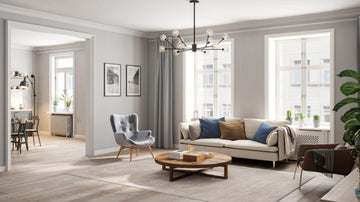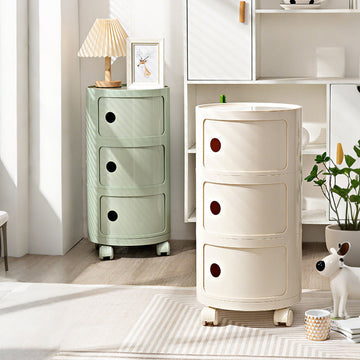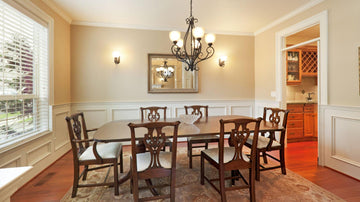Table of Contents
- Introduction
- A Simple Rule That Helps You Shop Without Regret
- What to Furnish First (And What Can Wait)
- Real Budgets, Real Talk: Where the Money Goes
- What’s Actually Worth the Money (And What Isn’t)
- When (and Where) to Shop Smart
- How to Add Style Without Spending a Fortune
- Avoiding the Most Common Furniture Budget Mistakes
- Final Thoughts: Budget Isn’t the Enemy—It’s the Blueprint
When I moved into my first apartment, I had a mattress on the floor, one folding chair, and a hand-me-down coffee table that wobbled every time I set something on it. My budget was tight, and to be honest, I had no clue what I was doing.
What I’ve learned since then is this: almost everyone starts that way. Most people don’t furnish their home in one go. They build it, piece by piece. And if your bank account is reminding you to slow down, that’s not a bad thing. It forces you to get creative, to think through your choices, and to buy things you actually need—not just what looks good in a showroom.
This isn’t about spending less for the sake of it. It’s about spending smarter. Knowing when to hold off, when to go all in, and how to make your money stretch without feeling like you’re settling.
This guide won’t promise you a magazine-ready home overnight. But it will walk you through how to make thoughtful decisions—so your home feels like you, even when your budget is saying “not yet.”

A Simple Rule That Helps You Shop Without Regret
The 20-50-30 Rule (It’s More Flexible Than It Sounds)
If you’re staring at an empty room and a limited budget, it’s easy to panic. Where do you even begin? What should you buy first?
One method that helped me figure things out was breaking the budget into three rough categories:
-
About 20% for the absolute essentials. The things you need to live a basic, functional life: a bed, a table, a few chairs. Nothing fancy, just the basics.
-
Around 50% for the pieces you’ll actually use every day. Your sofa, a desk if you work from home, a dresser, maybe a bookshelf or storage unit.
-
The last 30% for upgrades and finishing touches. This is where rugs, lighting, artwork, and smaller pieces come in. The fun stuff—but not the urgent stuff.
You don’t have to follow this with a calculator. It’s more like a compass, something to keep you from blowing half your budget on a trendy accent chair when you don’t even have a place to eat dinner.
When I followed this approach, I didn’t feel deprived—I felt in control. I knew where my money was going, and I didn’t end up with buyer’s remorse a week later.
What to Furnish First (And What Can Wait)
When you’re on a limited budget, trying to furnish every room at once is a fast way to run out of money—and energy. Instead, think about what spaces you’re actually going to use every single day.
Here’s how I usually prioritize things:
1. The Bedroom Comes First
You sleep here. You store your clothes here. You probably spend more time in this room than any other—even if most of it is unconscious. A decent mattress and a stable bed frame can change how you feel when you wake up. Don’t skimp if you can avoid it.
2. The Living Room Is Next
Whether you’re watching TV, working on your laptop, or just trying to relax after a long day, the living room gets a ton of use. A solid, comfortable sofa is worth saving for.
If you can’t afford a full setup yet, even a loveseat or floor cushions can hold you over. The point is to make the space usable, not perfect.
3. The Dining Area (Or, a Place to Eat)
Even if your “dining room” is just a corner of your kitchen, having a small table and two chairs makes a difference. Eating on the couch gets old fast. And if you’re working from home, this space can double as your desk.
4. Everything Else Can Wait
That guest room? The hallway console? The reading nook you saw on Pinterest? They’ll get their time. But for now, focus on the places where you spend the most time and solve the most problems.

Real Budgets, Real Talk: Where the Money Goes
Let’s break this down into a few realistic budget ranges. These aren’t formulas—they’re starting points based on what I (and a lot of my friends) actually spent.
Budget: $2,000–$4,000
(First apartment, small space, starting from scratch)
This is the “just moved in” budget. It’s tight, but you can absolutely make it work if you’re careful about where you shop and what you prioritize.
What that might look like:
-
$1,000 for the bedroom – Mattress ($400–600), basic bed frame ($100–300), and maybe a cheap nightstand or lamp.
-
$800 for the living area – Sofa or loveseat ($400–600), coffee table ($50–150), and something for your TV.
-
$300 for dining – A compact table and 2–4 chairs. Foldable or stackable chairs are a win here.
-
$200 for storage – Cube shelves, closet organizers, anything to keep clutter off the floor.
🛋️ Budget: $4,000–$10,000
(More room, more comfort, more flexibility)
If you’ve got a bit more to work with, you can start thinking about comfort and style—not just survival.
What this covers:
-
Bedroom ($1,500–$2,500) – You can invest in a better mattress, get matching nightstands, and maybe a dresser that doesn’t wobble.
-
Living Room ($1,500–$3,000) – A full-size sofa, a rug, a media console, and a side chair to fill out the room.
-
Dining ($800–$1,200) – A nicer table, more comfortable chairs, maybe a sideboard or bar cart.
-
Office or multipurpose area ($700–$1,000) – A real desk, a supportive chair, and shelves.
What’s Actually Worth the Money (And What Isn’t)
Invest In
Your Mattress
It’s where you’ll spend a third of your life. A decent mattress improves sleep, posture, and even your mood. If you’re going to spend more on one thing, make it this.
Your Sofa
It’s where you unwind, host friends, binge-watch, nap, or eat dinner (no judgment). You want something that’s comfortable, supportive, and built to last.
Your Work Chair
If you work from home or sit a lot, don’t go cheap here. A supportive chair preserves your back, your focus, and your sanity.
Lighting
This one’s underrated. Good lighting transforms a room. Overhead lights rarely cut it—add lamps, task lights, and warm bulbs.
Save On
Side Tables
They’re useful, but you don’t need to splurge. You can find great ones secondhand or at budget retailers.
Extra Dining Chairs
Unless you host often, get 2–4 good chairs and borrow or rent extras when needed.
Storage Bins & Decorative Boxes
Don’t spend $60 on a branded basket. Get something simple and functional.
Outdoor Furniture
It’s seasonal. Look for discounts during off-season or consider secondhand.

When (and Where) to Shop Smart
Best Times to Buy Furniture in the U.S.
-
Holiday Weekends – Memorial Day, Presidents’ Day, Labor Day, and of course, Black Friday. Major retailers offer big markdowns.
-
End of Season (July, January) – New collections come in, old stock goes out. Great time to score deals.
-
New Year Clear-Outs – January is often overlooked, but it’s furniture gold.
-
Back-to-School Season – August/September deals, especially for compact apartment-friendly pieces.
Where to Shop Without Regret
-
Online Retailers – Wayfair, Article, AllModern, and of course, SSL for a tight edit of modern, functional pieces.
-
Local Furniture Stores – Especially ones with floor model sales or open box discounts.
-
Facebook Marketplace/Craigslist – You’d be shocked at what people are willing to give away when moving.
-
Thrift Stores or Estate Sales – Great for unique finds and solid wood furniture.
-
IKEA – Still unbeatable for basics, especially if you’re handy with an Allen wrench.
How to Add Style Without Spending a Fortune
Use Multipurpose Furniture
Pieces that serve more than one function = more value for your money.
-
Ottomans with storage – Footrest, table, and hidden bin in one.
-
Foldable stools – They disappear when you don’t need them and work in any room.
-
Cube shelving – Use them vertically or horizontally. Add baskets for a cleaner look.
Stick to a Neutral Base
You don’t need a bright yellow couch to create a bold space. Let your larger pieces stay neutral (gray, beige, white, black), and add color through:
-
Throw pillows
-
Curtains
-
Wall art
-
Plants
-
Lampshades
That way, if your style shifts, you’re not stuck with a huge pink sofa you regret.
Thoughtful Layout > Fancy Stuff
Before buying more furniture, ask: is your space working the way you live? Sometimes, rearranging what you already have makes a bigger difference than adding more things.
-
Open up your floor plan – Push furniture away from the walls.
-
Use vertical space – Tall bookshelves and wall-mounted storage can free up square footage.
-
Pick mobile pieces – Furniture with wheels or lightweight builds lets you reconfigure easily.

Avoiding the Most Common Furniture Budget Mistakes
Even with the best intentions, it’s easy to fall into a few traps. Here’s what to watch out for:
Mistake 1: Buying Everything at Once
It’s tempting to want your home "done,” especially after a move. But rushing leads to poor decisions, overspending, and mismatched styles. Take your time. Live in the space. Let it tell you what it needs.
Mistake 2: Obsessing Over Brands
Just because something has a big name doesn’t mean it’s better. Focus on quality, materials, and reviews—not just the brand tag.
Mistake 3: Falling for Discounts You Don’t Need
A $300 chair on sale for $150 is still $150 wasted if it doesn’t fit your space or style. Ask yourself: Would I buy this at full price? If the answer’s no, walk away.
Mistake 4: Ignoring Hidden Costs
-
Delivery and assembly – Not always included. Some “free shipping” is curbside only.
-
Maintenance – Velvet looks great until you spill red wine. Understand what care your furniture needs.
-
Returns – Some stores charge hefty restocking fees. Always read the fine print.
Final Thoughts: Budget Isn’t the Enemy—It’s the Blueprint
Your furniture budget isn’t something to fight against. It’s a tool. It helps you clarify what matters most, what you really need, and how to create a space that works for your life—not just a photo.
You don’t have to furnish everything at once. You don’t have to match every piece. You don’t have to impress anyone but yourself.
Start with the essentials. Add pieces over time. Focus on comfort and usefulness. And let your home grow with you.
The best spaces aren’t built in a day—they’re built with care, intention, and a little creativity. Budget or not, that’s something we can all afford.








